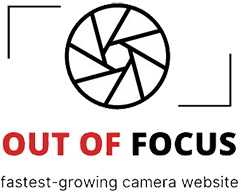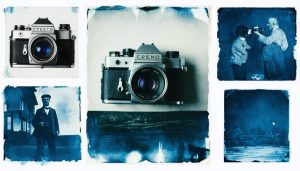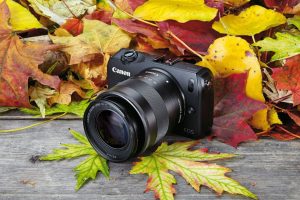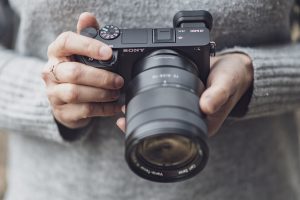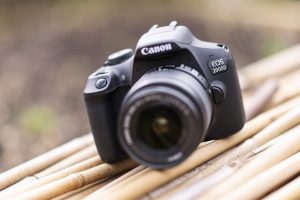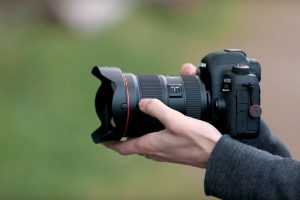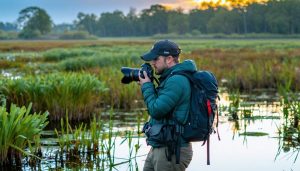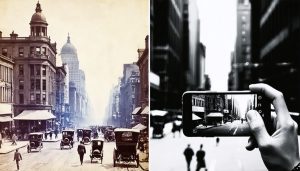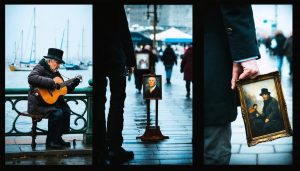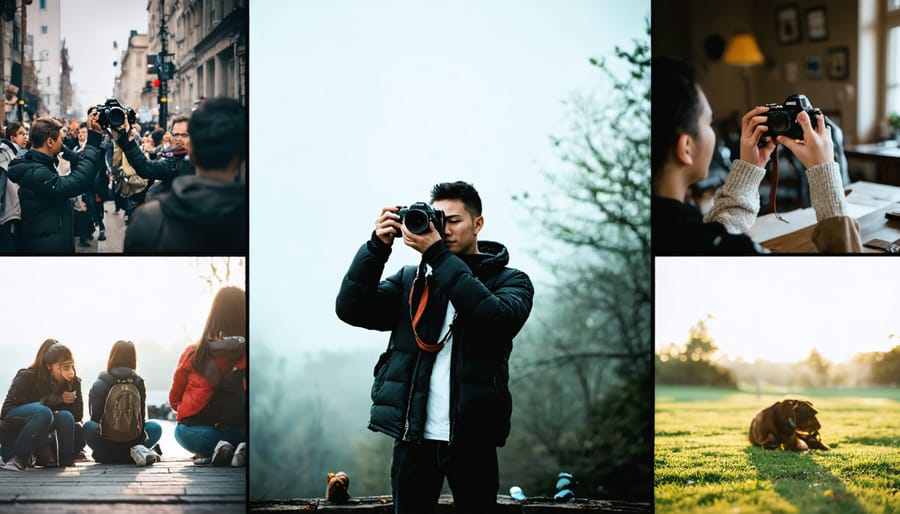
Transform everyday moments into compelling visual narratives by mastering the art of photography storytelling. Through carefully composed sequences, thoughtful symbolism, and strategic technical choices, your images can weave tales that resonate deeply with viewers and transcend simple documentation.
The most powerful photo stories emerge when technical expertise meets genuine human connection. Whether capturing the quiet dignity of daily routines, the raw emotion of pivotal life moments, or the subtle interplay of light and shadow that hints at deeper meanings, storytelling through photography demands both artistic vision and deliberate execution.
This intersection of technical skill and narrative insight opens up endless creative possibilities. From documenting social issues that demand attention to crafting personal photo essays that celebrate life’s intimate moments, photography storytelling empowers you to shape how others see and understand the world. The key lies in developing both your eye for meaningful moments and your ability to capture them in ways that speak volumes without words.
Ready to elevate your visual storytelling? Let’s explore proven techniques for crafting photo narratives that captivate viewers and convey powerful messages, whether you’re documenting a day in the life, creating a thematic series, or building a compelling portfolio that showcases your unique perspective.
[Word count: 156]
The Elements of Visual Storytelling
Establishing Your Narrative
Every compelling photograph starts with a clear understanding of the story you want to tell. Begin by asking yourself key questions: What emotions do you want to evoke? Who are the main subjects? What broader message are you trying to convey? These answers will form the foundation of your visual narrative.
Consider creating a simple storyboard or outline before you start shooting. This can be as basic as a few sketches or notes about the key moments you want to capture. Think about the beginning, middle, and end of your story – even a single image can suggest a larger narrative through careful composition and timing.
Your narrative might focus on personal transformation, cultural traditions, environmental concerns, or everyday moments that often go unnoticed. Whatever theme you choose, ensure it resonates with your own interests and experiences. Authentic storytelling comes from genuine connection to your subject matter.
Look for visual elements that support your narrative: leading lines that guide viewers through the story, symbolic objects that add depth, or recurring motifs that tie multiple images together. Pay attention to lighting, as it can dramatically affect the mood and emotional impact of your story.
Remember that effective visual storytelling often requires you to be selective. Not every detail needs to be explicitly shown – sometimes what you leave out of the frame is as important as what you include. Give your viewers space to engage with the story and draw their own conclusions.
Visual Elements That Drive Story
The power of visual storytelling in photography lies in mastering the core visual principles that guide our viewer’s eye through the frame. Composition serves as your story’s foundation, where leading lines, the rule of thirds, and framing devices work together to create a clear visual hierarchy. Consider how diagonal lines can inject dynamism into your narrative, while symmetry might convey stability or order.
Lighting plays a crucial role in setting your story’s mood and atmosphere. Harsh shadows can dramatize a scene, while soft, diffused light often evokes gentler emotions. The golden hour’s warm glow naturally lends itself to nostalgic or romantic narratives, while blue hour creates a mysterious, contemplative atmosphere.
Perhaps most importantly, moment selection can make or break your visual story. The decisive moment isn’t just about capturing peak action – it’s about finding that split second where all elements align to convey your intended message. Look for genuine expressions, meaningful gestures, or environmental interactions that add layers to your narrative.
When these elements work in harmony, they create a visual journey that guides viewers through your story without words. Pay attention to how these components interact: a perfectly timed moment loses impact without thoughtful composition, while beautiful lighting alone can’t save poor timing.
Creative Photo Story Projects
Day in the Life Series
The beauty of storytelling through photography lies in capturing the seemingly ordinary moments that make every shot count. A Day in the Life series offers a compelling way to document the authentic rhythm of daily existence, whether you’re following your own routine or someone else’s journey.
Start by selecting a subject – perhaps a local artisan, a family member, or even yourself. Plan to photograph them from dawn to dusk, capturing both pivotal moments and quiet intervals. The key is to remain unobtrusive while documenting genuine interactions and emotions.
Consider shooting in chronological order, beginning with morning rituals like brewing coffee or preparing for work. Pay attention to environmental details that help tell the story: steam rising from a cup, sunlight streaming through windows, or the gentle chaos of a workspace.
Try varying your perspective throughout the day. Mix wide establishing shots that show context with intimate close-ups that reveal character. Look for recurring elements or motifs that can thread through your narrative – perhaps a particular object, location, or gesture that appears multiple times.
Remember to capture transitions between activities, as these often reveal subtle but meaningful moments. The goal isn’t to simply record events but to weave together a visual narrative that reveals the poetry in everyday life. Focus on authentic moments rather than posed shots, allowing the natural flow of the day to guide your storytelling.
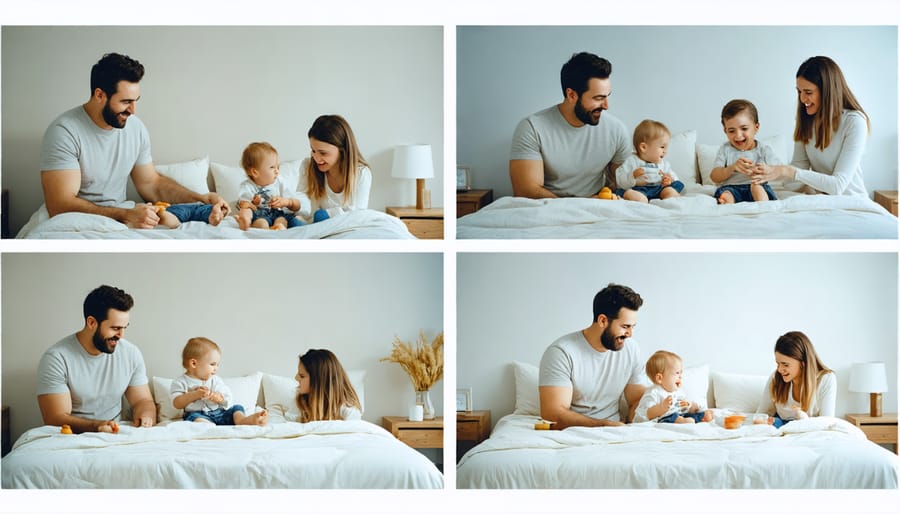
Before and After Transformations
Before and after transformations are powerful tools for storytelling through photography, capturing the journey of change in compelling visual narratives. This technique involves photographing the same subject at different points in time to document transformation and progress.
Consider documenting a home renovation project, capturing the stark contrast between a dated kitchen and its modern transformation. Take identical angles and compositions for both shots to emphasize the changes. Natural light and consistent time-of-day shooting will ensure your images maintain visual coherence.
Urban development projects offer another exciting opportunity. Photograph a construction site from its groundbreaking to completion, maintaining fixed vantage points to create a dramatic sequence. This works particularly well when shooting from an elevated position to showcase the full scope of change.
Nature provides endless possibilities for transformation stories. Document a garden’s growth from bare soil to full bloom, or capture seasonal changes in a landscape. For maximum impact, use the same framing and camera settings across your series.
Personal transformations make for intimate storytelling opportunities. Whether it’s a fitness journey, pregnancy progression, or a child’s growth, create consistency by using the same background, lighting, and pose. Consider creating a photo grid or diptych presentation to showcase the before and after images side by side.
Remember to maintain detailed records of your camera settings, shooting positions, and timing to ensure consistency throughout your transformation series. This attention to detail will strengthen your visual narrative and create more impactful comparisons.
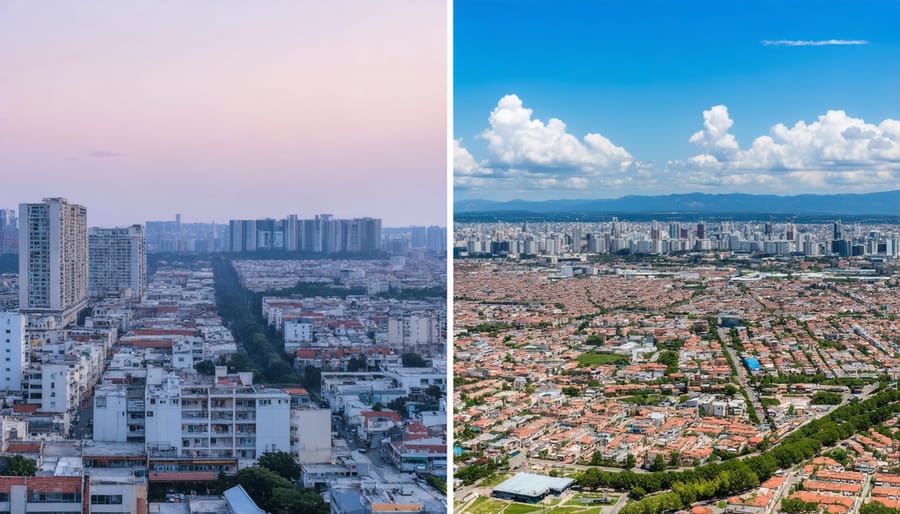
Environmental Portraits
Environmental portraits go beyond simple headshots by incorporating a subject’s surroundings to tell a deeper story about who they are and what they do. These compelling images capture people in their natural habitat – whether it’s an artist in their studio, a chef in their kitchen, or a farmer in their fields.
To create powerful environmental portraits, start by scouting locations that reflect your subject’s personality or profession. Look for elements that add context and depth to the story you want to tell. Consider how natural light interacts with the space and how architectural features might frame your subject.
Position your subject in ways that highlight their relationship with their environment. Have them interact naturally with their surroundings rather than merely standing still. A mechanic might lean over an engine, while a teacher could engage with their classroom materials. These authentic interactions create visual narratives that resonate with viewers.
Pay attention to composition elements that reinforce your story. Leading lines can draw attention to important details, while depth of field can emphasize or de-emphasize environmental elements. Consider including meaningful objects or tools of the trade, but be careful not to overcrowd the frame.
Remember that successful environmental portraits often require building rapport with your subject. Take time to make them comfortable and understand their story before shooting. This connection will help you capture authentic moments that truly represent who they are in their element.

Technical Considerations
Sequential Shooting
Sequential shooting is a powerful technique that helps you capture the progression of a story through a series of connected images. Start by setting your camera to continuous shooting mode (burst mode), which allows you to capture multiple frames per second. For most storytelling sequences, a medium burst rate of 3-5 frames per second works well, giving you enough frames to show progression without overwhelming your narrative.
Consider using manual mode to maintain consistent exposure across your sequence, especially when shooting in changing light conditions. This ensures your viewers focus on the story’s progression rather than being distracted by varying brightness levels. Set your shutter speed high enough to freeze motion if you’re capturing action sequences – typically 1/250th of a second or faster.
When planning your sequence, think about the key moments that will best convey your story’s progression. For example, if you’re photographing someone preparing a meal, capture the ingredients being chopped, mixed, cooked, and plated. Position yourself strategically to maintain consistent framing throughout the sequence, using a tripod if necessary to keep your composition stable.
Pay attention to timing and pacing. Not every moment needs to be captured – focus on the transitional moments that show clear progression from one state to another. Consider using interval timing for longer processes, where your camera automatically takes shots at preset intervals.
Remember to shoot more frames than you think you’ll need. This gives you flexibility in post-processing to select the most compelling images that tell your story clearly and concisely. When editing, look for natural flow between images and consider how they work together to convey your narrative.
Editing for Narrative Flow
The way you edit your photos can dramatically enhance their storytelling impact. Through thoughtful creative post-processing techniques, you can guide viewers’ attention and strengthen your narrative’s emotional resonance.
Start by considering your color palette. Warm tones can evoke comfort and nostalgia, while cooler tones might suggest isolation or mystery. Selective desaturation draws attention to key story elements, while subtle vignetting helps frame your subject and create visual hierarchy.
Cropping isn’t just about composition—it’s about focusing your story. Sometimes, removing distracting elements or tightening the frame can make your narrative more impactful. Pay attention to leading lines and negative space, using them to direct viewers through your visual story.
Consider the emotional impact of contrast. High contrast can create drama and tension, while softer contrast often conveys gentleness or dreamlike qualities. When editing a series, maintain consistent processing across images to create a cohesive narrative thread.
Don’t overlook the power of subtle adjustments. Small tweaks to shadows can reveal hidden details that enhance your story, while carefully adjusted highlights can create emphasis or mood. Remember that editing should enhance, not overshadow, your narrative—every adjustment should serve your story’s purpose.
For sequential narratives, consider how transitions between images work together. Similar tonal qualities can create smooth visual flow, while deliberate contrast between consecutive images can create powerful emotional shifts that drive your story forward.
Building Your Photo Essay
Image Selection and Sequence
Creating a compelling photo story isn’t just about capturing great individual shots – it’s about how those images work together to convey your narrative. Start by gathering all your potential images and laying them out, either physically or digitally. This initial review helps you identify the strongest images that truly contribute to your story.
Consider your opening and closing images carefully – they’re like the first and last sentences of a novel. Your opening shot should grab attention and set the tone, while your closing image needs to provide a satisfying conclusion or leave a lasting impression. Much like how color theory in photography creates visual harmony, the sequence of your images should flow naturally.
Look for variety in your selection while maintaining consistency. Mix wide shots that establish context with intimate details that reveal character or emotion. Pay attention to visual transitions – images can be linked through similar colors, shapes, or themes. Avoid redundancy; if two photos tell the same story, choose the stronger one.
Think in terms of emotional pacing. Just as a story has rises and falls in tension, your photo sequence should create rhythms that keep viewers engaged. Consider using establishing shots followed by closer details, or building to an emotional climax through carefully ordered images.
Remember that less is often more. It’s better to have a tight selection of 8-12 impactful images that tell your story clearly than 30 photos that dilute your message. Each image should earn its place by adding something unique to the narrative.
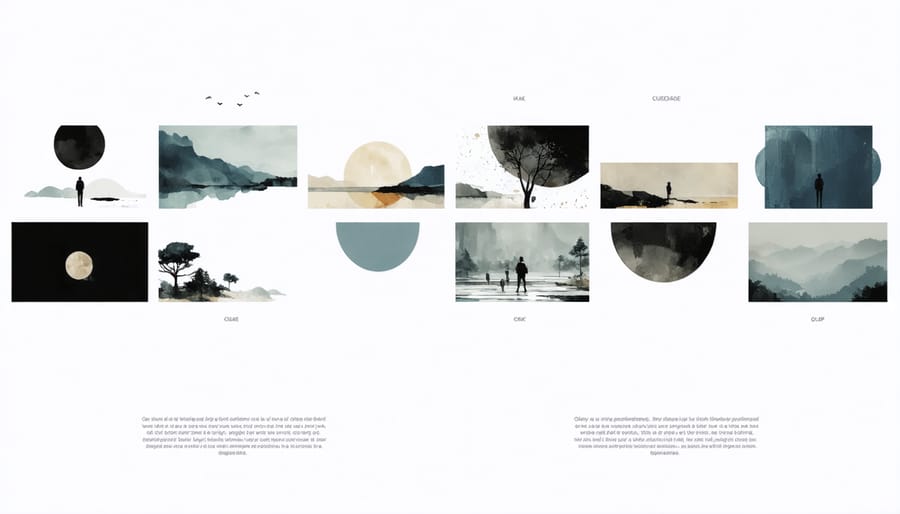
Presentation Methods
Once you’ve crafted your photo story, choosing the right presentation method can significantly enhance its impact. Digital slideshows offer a dynamic way to control pacing and incorporate music or narration, making them ideal for emotional narratives. Popular platforms like Adobe Spark and Animoto provide user-friendly tools to create professional-looking presentations.
Physical photo books remain a timeless choice, offering a tactile experience that digital formats can’t replicate. Consider the sequence carefully when designing your layout, using double-page spreads for dramatic effect and varying image sizes to create visual rhythm.
Online galleries and portfolio websites allow for broader reach and interactive viewing experiences. Platforms like Squarespace and Format offer clean, customizable templates specifically designed for photographic storytelling. Consider creating themed collections or series pages to group related narratives together.
Social media platforms each offer unique storytelling opportunities. Instagram’s carousel feature works well for linear narratives, while Stories allow for more experimental, ephemeral storytelling. Facebook albums can include detailed captions and encourage audience engagement through comments.
Exhibition spaces, whether physical or virtual, provide opportunities for large-scale presentations and creative installations. Consider how viewers will move through the space and interact with your images. Mixed media presentations, combining photographs with text, audio, or physical objects, can create immersive experiences that enhance your narrative.
Remember to match your presentation method to your story’s tone and intended audience. A serious documentary project might benefit from a clean, minimalist gallery presentation, while a personal narrative might feel more authentic as an intimate photo book.
Photography storytelling is a powerful way to connect with your audience and share meaningful narratives through your lens. Throughout this guide, we’ve explored various techniques and ideas to help you craft compelling visual stories, from documenting daily life to creating conceptual series that speak to deeper themes.
Remember that successful photographic storytelling combines technical skill with emotional intelligence. Whether you’re capturing candid moments at family gatherings, documenting social issues in your community, or creating abstract narratives through still life, the key is to maintain authenticity while considering composition, lighting, and timing.
The projects and techniques we’ve discussed are just starting points. Don’t be afraid to experiment and develop your unique voice. Start small with a simple photo essay about your neighborhood, then gradually tackle more complex narratives as your confidence grows. Pay attention to the details that make your story unique, and always consider how your images will resonate with your intended audience.
Most importantly, practice regularly. The best stories often emerge when you least expect them, so keep your camera ready and your storyteller’s eye sharp. Challenge yourself to find narratives in ordinary moments and push beyond your comfort zone to explore new perspectives and techniques.
As you begin your storytelling journey, remember that every photographer’s path is different. Focus on the stories that matter to you, and your authenticity will shine through in your work. The techniques and ideas shared here are meant to inspire rather than restrict – use them as building blocks to create your own unique visual narratives.
Now it’s your turn to pick up your camera and start telling your stories. The world is waiting for your unique perspective.
